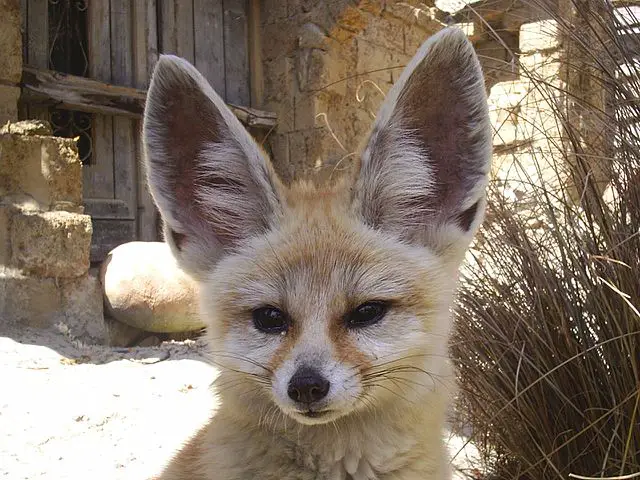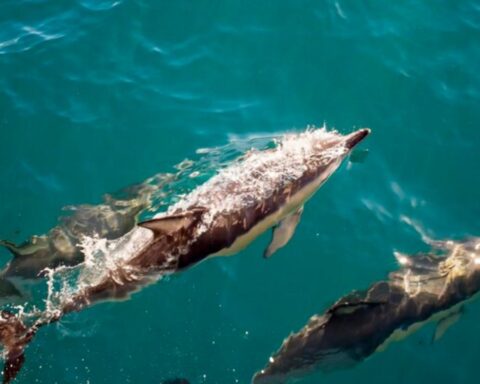Australia is home to a large variety of unique animals. About 69% of mammals, 93% of reptiles, 94% of amphibians, and 46% of birds found in Australia are native to this continent and found nowhere else in the world. From marsupials (pouched mammals like kangaroos and koalas) to monotremes (egg-laying mammals like platypus and echidnas), Australian wildlife exhibits a remarkable evolutionary history. The endemism of such a large variety of animals can be due to millions of years of isolation, tectonic stability, and outcomes of a unique pattern of climate change over geological time.
Here, we gathered information about animals you might find in Australia, why Australia has so many weird animals, how many animals are unique to Australia, and some interesting facts about animals in Australia.
Animals You Might Find In Australia – Animals In Australia
Australia inhabits a wide variety of unique animals. It is home to all three types of mammals, the world’s most venomous snakes, and one of the world’s deadliest spiders. The following are a few examples of diverse animals found only in Australia:
Marsupials

Marsupials, also known as pouched mammals, are animals with a distinctive characteristic of carrying their young in a pouch. The well-known marsupial species native to Australia are:
Kangaroo
Kangaroos are a symbol of Australia, known for their powerful hind limbs used for jumping and pouches for carrying young (joeys).
Koala
The koala is another Australian icon animal known for its cuddly appearance and special diet exclusively consisting of eucalyptus leaves.
Tasmanian devil
Tasmanian devils are found only in the wilds of Tasmania. They are known for their powerful jaws and fierce nature.
Quokka
Quokkas are small marsupials mainly found in Western Australia and known for their friendly behavior. They are also called the “happiest animals in the world” due to their smiling appearance.
Wombat
Wombats are burrowing marsupials known for their robust build, strong claws, and unique backward-facing pouches. They are herbivores and well-adapted to digging.
Monotremes: egg-laying mammals

Monotremes are egg-laying mammals that lay eggs instead of giving birth to living young. Living species of monotremes include platypus and four species of echidnas:
Platypus
Platypus is a well-known egg-laying mammal species native to Australia. Its distinctive characteristics include a duck-like bill, otter-like webbed feet, and a beaver-like tail. They are semi-aquatic and spend most of their time foraging in water.
Echidnas
Echidnas are native to Australia and New Guinea. They have dome-shaped bodies covered with coarse hair and spines. They mostly eat ants and termites. Due to their diet and appearance, they are also called spiny ant-eaters.
Placental Mammals

In placental mammals, the fetus develops inside the mother’s uterus and is born in a relatively large and mature stage. In Australia, native placental mammals are relatively scarce as compared to the other two types of mammals. The well-known examples of placental mammals in Australia are:
- The Dingo (Canis lupus dingo) is a well-known native placental mammal to Australia. It is a wild dog that is believed to have arrived in Australia around 4,000 years ago.
- Brush-tailed Rabbit rat (Conilurus penicillatus) is a nocturnal rodent native to northern Australia. It is also known as “emu mouse”, and eats plant materials like seeds and fruits.
Birds

Some of the well-known birds native to Australia include:
Emu
Emu is a flightless bird native to Australia and is known for its long neck, legs, and high running speed. In flightless living birds, it is the second largest by height.
Cassowaries
Cassowaries are also large flightless birds native to northeastern Australia and nearby islands. They are known for helmet-like structures on their heads.
Kookaburras
Kookaburras are small birds of the kingfisher family native to Australia and New Guinea. They are renowned for their distinctive laughing calls.
Reptiles

The most notable reptiles native to Australia include:
Inland Taipan (Oxyuranus microlepidotus)
The inland taipan is also known as the “fierce snake” and is native to central Australia. It is considered the most venomous snake in the world.
Frilled-neck lizard (Chlamydosaurus kingii)
Frilled-neck lizard is well-known for its distinctive frill around its neck. It is found in northern Australia and parts of New Guinea. The frill display is a defensive mechanism when they feel threatened.
Eastern blue-tongue lizard (Tiliqua scincoides)
This lizard is mostly found across eastern Australia. It is known for its distinctive blue tongue and docile nature.
Thorny Devil (Moloch horridus)
The thorny devil is a unique-looking lizard with spikes and camouflaged coloring. It is native to arid regions of central and western Australia and well-adapted to desert life.
Amphibians

Some of the well-known amphibians native to Australia include:
- The Giant burrowing frog (Heleioporus australiacus) is a large burrowing frog found in eastern Australia. It spends much of its time underground and is known for its deep calls.
- Smooth toadlet (Uperoleia leavigata) is a small terrestrial frog native to southeastern Australia. It is known for its bright colors and toxins it secretes as a defense mechanism against predators.
- The Striped marsh frog (Limnodynastes peronii) is a frog species found across Australia in a variety of habitats. It is known for striped patterns and distinctive calls.
Marine Life

The Great Barrier Reef
The Great Barrier Reef is the world’s largest coral reef system located off the coast of Queensland. It is home to an extraordinary diversity of marine life including hundreds of species of corals, thousands of species of fish, and many other marine organisms such as mollusks, rays, sharks, and sea turtles.
Giant cuttlefish or Australian cuttlefish
The giant cuttlefish is the world’s largest cuttlefish species found in southern Australian waters. It is known for its color-changing abilities and complex social behavior during the breeding season.
Australian sea lion
The Australian sea lion is one of the rarest sea lion species in the world, endemic to Australia. It is mostly found along the southern coast of the continent.
Arachnids

- Sydney Funnel-web Spider (Atrax robustus) is a venomous spider native to Sydney and surrounding regions. It is known for its potent venom and aggressive behavior. It is considered one of the deadliest spiders in the world.
- Redback Spider (Latrodectus hasseltii) is a venomous spider closely related to the black widow spider. It is native to Australia and is known for its red stripe on the abdomen.
- Australian Tarantulas (Selencosmiinae spp.) Australia is also home to several species of tarantulas, including the common brown tarantula. These large spiders are found in a variety of habitats, such as deserts and forests.
Insects

- The Giant Burrowing Cockroach (Macropanesthia rhinoceros) is a large flightless cockroach species native to northern Australia. It is well-known for its burrowing behavior. It plays an important role in recycling organic matter in the ecosystem.
- Australian Walking Sticks (Extatosoma tiaratum) are stick insects found in many habitats across Australia. They are known for their extraordinary camouflage resembling twigs and branches.
- Rainbow Stag Beetles (Phalacrognathus muelleri) are striking beetles native to northeastern Australia. They are well-known for their vibrant colors.
- Australian Jewel Beetle (Castiarina spp.) is a diverse group of beetles found in various habitats across Australia. They are well-known for their bright metallic colors.
Why Does Australia Have So Many Weird Animals?
Australia is well-known for so many weird animals, which can be attributed to several factors, such as:
Geological Isolation
Long geographic separation of the Australian continent for millions of years from other landmasses allowed its wildlife to evolve independently. Moreover, tectonic stability and a unique pattern of climate change over geological time also result in an impressive range of endemic species found nowhere else on Earth.
Ancient Origins
The long evolutionary history of Australia is a factor that leads to so many unique animals. The origin of some animals goes back to over 180 million years ago when Australia was broken from the supercontinent Gondwana. The lineages of animals like kangaroo, koala, and platypus are ancient and evolved in isolation on the continent.
Diverse Habitats
Australia has a diverse range of habitats, including deserts, tropical rainforests, as well as unique ecosystems such as the Great Barrier Reef. These habitats have a role in the evolution of wildlife in Australia. It leads a diverse range of species to adapt to different ecological niches.
Lack Of Competitors
Due to isolation from other continents, mammals in Australia did not have many competitors for space and resources. It allowed marsupials (kangaroos, koalas, etc) to occupy ecological niches that would otherwise be occupied by placental mammals in other parts of the world.
How Many Animals Are Unique To Australia?
It is difficult to provide the exact number of animal species unique to Australia. However, estimates show that the number of native species is about one million.
It has been estimated that around 94% of amphibians, 93% of reptiles, 69% of mammals, and 46% of birds found in Australia are endemic to the continent and found nowhere else in the world.
Interesting Facts About Animals In Australia
- All three types of mammals are found in Australia; monotremes (egg-laying mammals), marsupials (pouched mammals), and placental mammals. Of all the mammals, about 69% are native to the Australian continent and found nowhere else in the world.
- Over 80% of all plants, mammals, reptiles, and amphibians in Australia are unique to the continent.
- Australia is also home to the Saltwater crocodile (Crocodylus porosus) which is the world’s largest reptile, dugongs (dugong dugon) also known as sea cow, Whale shark (Rhincodon typus), and humpback whale.
- The Great Barrier Reef of Australia is the largest coral reef system in the world. It provides habitat to a wide range of animals including fish, corals, sharks, and turtles.
- The Australian bowerbird, endemic to eastern Australia, is known for its special courtship displays. Males build intricate bowers decorated with colorful objects to attract mates.












